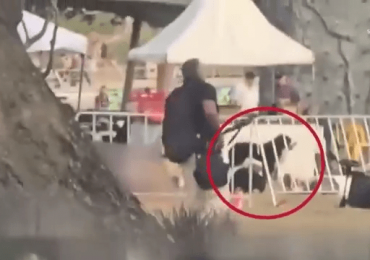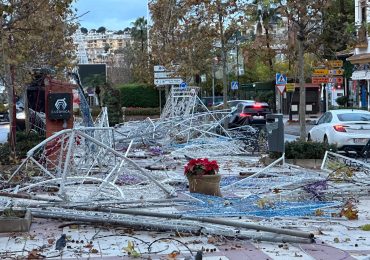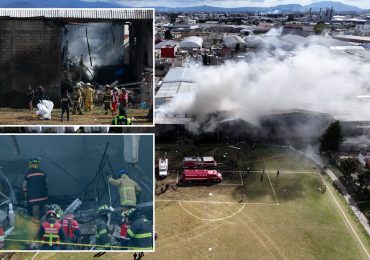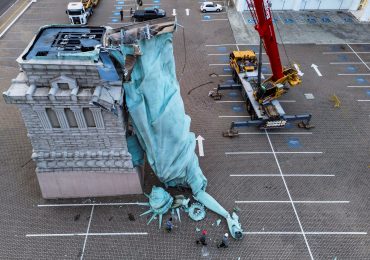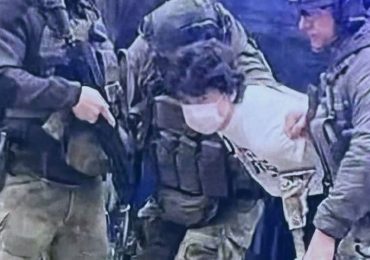Few saw it coming. The sudden and dramatic fall of Bashar al-Assad’s regime in Syria came on Sunday after over a decade of brutal conflict.
“It took 12 days for the Syrian regime to collapse after 13 years of war,” Timour Azhari, the Iraq bureau chief at Reuters, wrote on X.
[time-brightcove not-tgx=”true”]
The Assad family had ruled Syria for over half a century that was marked by atrocities, mass incarceration against regime critics, and other grave human rights violations.
Rebel fighters declared Damascus liberated on Sunday and Assad fled to Russia. Many Syrians are jubilant about the news and hopeful about the country’s future. But there are deep concerns about what lies ahead after years of conflict that has left at least 500,000 dead and displaced almost 7 million within the country and sent millions more seeking refuge abroad.
It’s a complex situation, with numerous factions on the ground and several foreign actors involved. To better understand what’s happening, here’s a brief background on the key players.
The Assad regime
Assad, the longtime President of Syria and commander of the Syrian Armed Forces, is a trained ophthalmologist who succeeded his father Hafez in an unopposed election after the elder’s death in 2000.
The family had held power through the presidency since 1971 under the Ba’ath Party. The Assads come from the minority Alawite sect and their rule was characterized by its exploitation of sectarian divisions in the Sunni-majority country and violent suppression of dissent.
In 1982, the elder Assad launched what came to be known as the Hama Massacre that killed thousands to put down anti-government protests led by the Muslim Brotherhood. The regime of the younger Assad was widely held responsible for a sarin gas attack in 2013 that killed around 1,400 people and injured thousands more.
Russia
During the Syrian civil war—which began in 2011 after large-scale protests broke out amid the broader Arab Spring—Assad’s regime was backed by Russia and Iran in its fight against various rebel groups throughout the country, some of which were aligned with other foreign actors including the U.S. and Turkey. Russia, as a permanent member of the U.N. Security Council, has repeatedly wielded its veto power to shield the Assad regime.
The New York Times’ Anton Troianovski described Assad’s ousting as “one of the biggest geopolitical setbacks” of Vladimir Putin’s tenure, and an analyst told the newspaper that the collapse of one of his most important strategic allies could be blamed at least in part on the war in Ukraine taking up attention and resources. Assad has since been granted “humanitarian” asylum in Moscow.
HTS
Hay’at Tahrir al-Sham (HTS), formed from the al-Qaeda linked al-Nusrah Front, is the Sunni Islamist militant group that led the recent offensive and overthrow of Assad. The group is headed by founder Ahmed al-Sharaa, also known as Abu Mohammed al-Jolani, and has largely governed Idlib province in northwest Syria for several years.
HTS was formed after Jolani broke ties with al-Qaeda in 2016. It is considered a terrorist organization by the U.N. and several countries, including the U.S., though it has tried to rebrand itself in recent years as more moderate. Jolani has been described as a “pragmatic radical” and has promised to usher in reconstruction and stability after the revolution.
Since taking over, HTS has tasked Mohammed al-Bashir, the former head of the rebel group’s civilian administration that ran Idlib (and that has been accused of human rights violations), with leading a transitional government for the nation until March 1, 2025.
Islamic State
The Islamic State (also known as IS, ISIS, ISIL, or its Arabic acronym Da’esh) is a transnational jihadist group that gained global prominence in 2014, when it conquered large swathes of territory in Syria and Iraq and proclaimed a caliphate.
After protracted fighting with Syrian rebel groups and foreign forces, including the U.S., IS was defeated territorially in 2019, though the group is still active in pockets across the country.
The power vacuum in Syria following Assad’s toppling is viewed by some observers as an opportunity for IS to exploit. The U.S. has carried out dozens of airstrikes at IS targets in Syria in recent days.
SDF
The Syrian Democratic Forces (SDF) is a Kurdish-dominated coalition of ethnic militias that was founded in 2015, is backed by the U.S., and controls parts of northeastern Syria after combating IS there. Turkey, which controls parts of northern Syria along its border, opposes the SDF coalition, viewing it as part of the armed Kurdistan Workers’ Party (PKK) separatist movement that both Ankara and Washington designate a terror group.
After Assad’s fall, the SDF clashed with Turkish-backed rebels in Aleppo province, though the two sides have since reached a ceasefire, according to Reuters.
SNA
The Syrian National Army (SNA), a Turkish-backed coalition formed from the loose umbrella group of armed northern Syrian opposition factions known as the Free Syrian Army (FSA), worked together with other rebels including HTS to topple Assad.
The SNA’s alignment with Ankara—pursuing not just Assad’s fall but also Turkish military interests, including combating Kurdish forces—has drawn some criticisms and accusations of being a Turkish proxy.
Hezbollah
Assad had long relied on the Iran-backed Lebanese Shia militant group to backstop his own military in thwarting rebels across Syria. But Israel has in recent weeks decapitated the group’s leadership in Lebanon, including killing its longtime leader Hassan Nasrallah, in a devastating two-month war before a fragile ceasefire took hold Nov. 27.
According to Bruce Hoffman of the Council on Foreign Relations, Assad’s fall poses an “existential threat” to Hezbollah as “HTS will likely staunch the flow of Iranian weaponry and other materiel” to the Lebanese militant group.
Iran
Assad has been one of Iran’s long-standing allies, and Iran has backed him both financially and militarily since the start of the 2011 civil war. Days before Assad was overthrown, however, Tehran began to withdraw its forces from Syria.
Some experts say that when the HTS-led rebel offensive began last month, neither Assad’s Iranian nor Russian patrons were willing or capable of launching a counteroffensive as they had in 2016. “Both powers had grown increasingly frustrated with Assad’s intransigence. For Russia and Iran, Assad was their man until he wasn’t,” wrote Nicole Grajewski, for the Carnegie Endowment for International Peace think-tank’s Diwan blog.
Nonetheless, Assad’s fall has marked a major blow to Iran’s “Axis of Resistance” in the region. But reports suggest Iran has established a line of communication with the rebel groups.
Israel
Israeli Prime Minister Benjamin Netanyahu called the collapse of Assad’s regime a “new and dramatic chapter” in Israel’s goal to change “the face of the Middle East.”
Israel has launched hundreds of airstrikes on its neighbor Syria since Sunday, destroying entire squadrons of fighters, much of the country’s navy, radar and missile systems, and missile depots. The Israeli government said that it is trying to stop “extremists” from accessing chemical and heavy weapons.
Israel has also pushed deeper into a 155-sq. mi. buffer zone established after the 1973 Arab-Israeli war located east of the Israeli-occupied Golan Heights. “Israel has a long history of seizing territory during wars with its neighbors and occupying it indefinitely, citing security concerns,” according to a report in the Associated Press.
The U.S.
The U.S. has spoken out against Assad’s rule in Syria since the 2011 civil war broke out and intervened militarily in 2014 to combat, later alongside the SDF, IS forces in the country. Former President Barack Obama faced extensive criticism for not pursuing a more active intervention following the 2013 chemical weapons attack widely attributed to the Assad regime in eastern Ghouta, just outside Damascus. Obama had called the use of chemical weapons in Syria a “red line.”
Outgoing President Joe Biden said the toppling of Assad’s regime “a fundamental act of justice” but added that it was a “moment of risk and uncertainty.”
The U.S. currently has about 900 troops stationed in Syria. President-elect Donald Trump, however, has said that the U.S. should not intervene, posting on Truth Social: “THE UNITED STATES SHOULD HAVE NOTHING TO DO WITH IT. THIS IS NOT OUR FIGHT. LET IT PLAY OUT. DO NOT GET INVOLVED!”
Leave a comment


